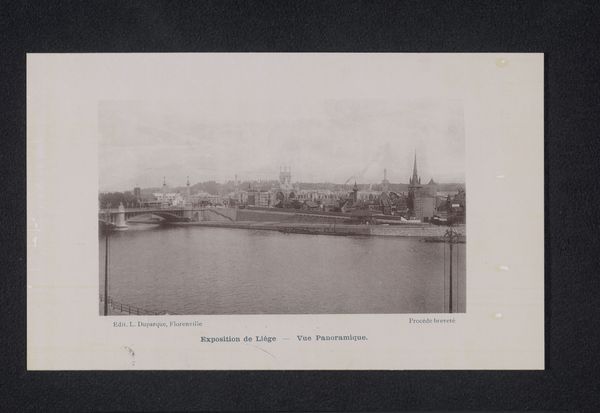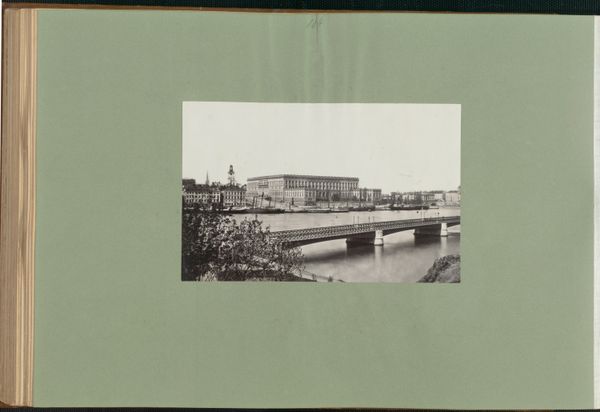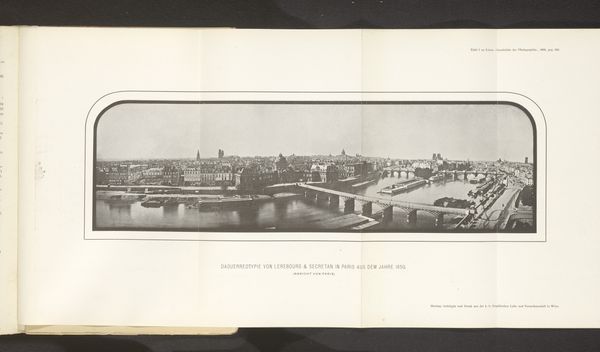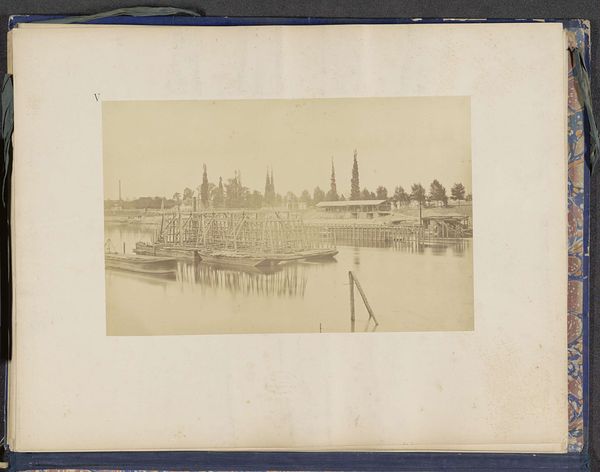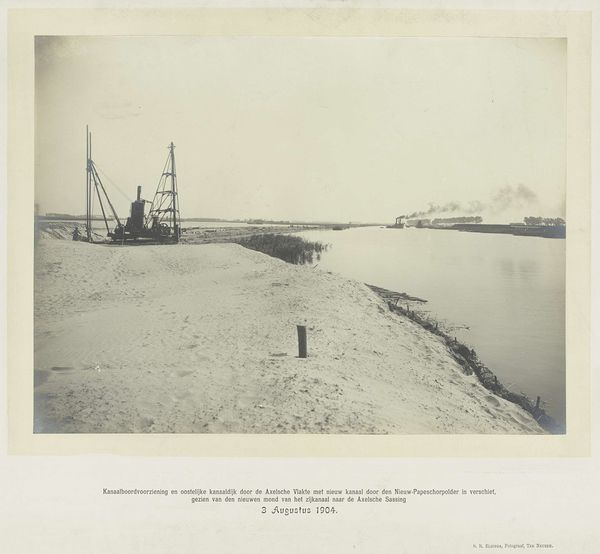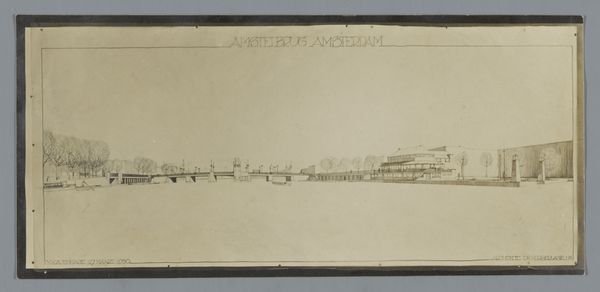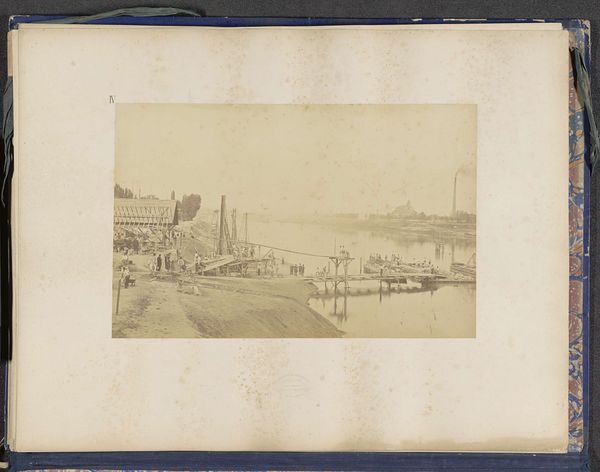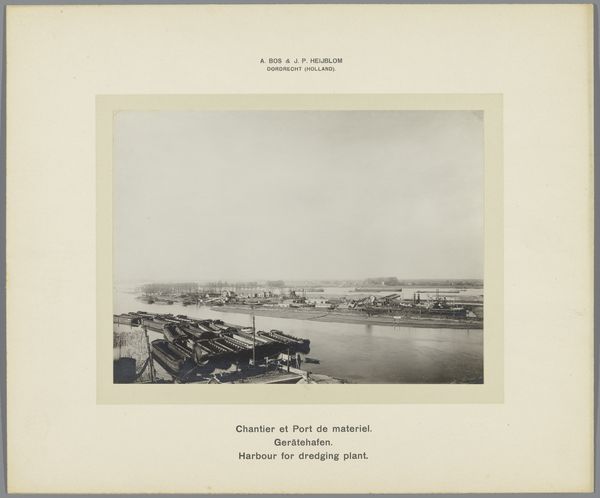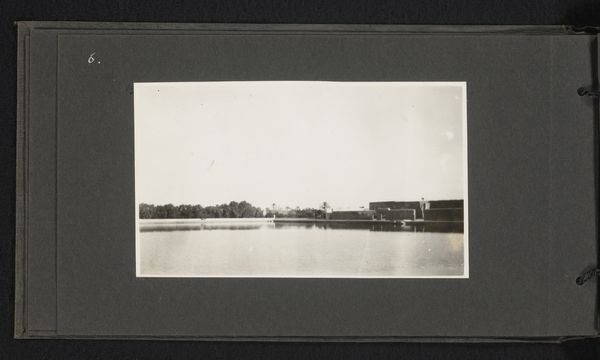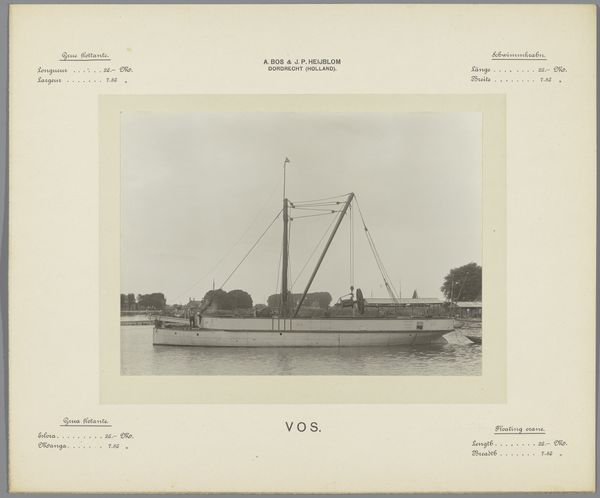
Gezicht op de Pont de Fragnée, ingang van de Wereldtentoonstelling van 1905 in Luik 1905
0:00
0:00
print, photography
#
pictorialism
# print
#
photography
#
cityscape
Dimensions: height 98 mm, width 168 mm
Copyright: Rijks Museum: Open Domain
Editor: Here we have a photograph from 1905 titled "View of the Pont de Fragnée, Entrance to the World Exhibition of 1905 in Liege." It’s a black and white print, and what strikes me is the calm, almost hazy quality of the scene. How do you interpret this work, especially in the context of world exhibitions? Curator: That’s a keen observation. World exhibitions like the one in Liège were massive exercises in soft power, showcasing national achievements in industry and technology. This photograph, with its Pictorialist style, offers a deliberately aestheticized view of progress. It’s not just documenting the event, it's shaping how it should be *remembered*. Note how the bridge and towers seem to rise ethereally from the water, creating a sense of optimism and national pride. Do you think that aesthetic aligns with what these expositions aimed to convey? Editor: I think so, the almost romantic quality definitely elevates it beyond a mere documentation of architecture. But the focus seems less on specific achievements and more on the atmosphere – the feeling of progress, as you say. Curator: Precisely. Consider, too, the medium – photography was still gaining acceptance as "high art". By employing a Pictorialist style, mimicking painting through soft focus and atmospheric effects, the photographer aimed to legitimize the medium and to tie technological advancement with established aesthetic values. It makes one wonder what political messages the commissioner tried to make. Editor: I see, it's like the photo itself is trying to gain legitimacy while also showcasing Belgium’s place in the world! That makes the composition choices really meaningful. Curator: Exactly. Looking closer, we see very little to hint that this place will receive thousands upon thousands of tourists. What we do see instead, is a carefully orchestrated representation of Belgium’s industrial advancement and, more importantly, its projection of its modernity to the world. Editor: I hadn't considered how curated and constructed the image is, aiming for a specific impression of progress and national pride. Thank you for shedding light on the intersection of art, power, and these expositions! Curator: And thank you for those perceptive initial observations; it really brought out the hidden messages this photo held.
Comments
No comments
Be the first to comment and join the conversation on the ultimate creative platform.
